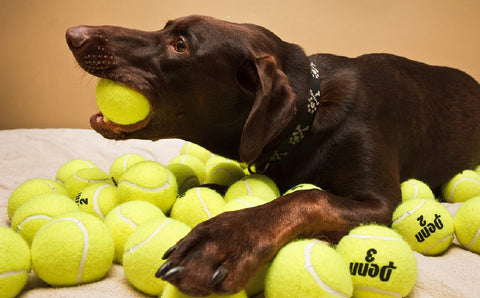Being a good dog parent means we need to be consistent. When we say that to our clients, we get a lot of head nods. Intellectually the concept has been understood but putting it into practice is another thing entirely.
There are so many moments when we fail to be consistent with our dogs. After a long day it can be tempting to throw all structure aside and get our dogs overly excited or let them invade our space and jump in our lap because we need some comfort. But it’s important to remember how and why we are doing these things.
We can get our dog excited, as long as it’s at an appropriate time and more importantly, as long as you can turn it off. You can let your dog cuddle, but you need to make sure it’s as much for their benefit as it is for yours. Remember your dog doesn’t understand part time roles. So, while letting them do what they want (call the shots) can feel nice from time to time, it actually ends up creating the sort of uncertainty about their role which directly leads to the unwanted behaviors that landed you at BDB to begin with. The how/why are very important, and consistency is key.
Another area we see behavior concept (eg, impulse control, calmness) inconsistency is in a new context. Some of our clients have the structure thing nailed when it’s only them, but the second you add kids, partners, relatives, or friends into the equation, consistency goes out the door.
Again, this creates uncertainty and leads to problem behaviors. You can’t have a structured, balanced life with your dogs until your in-laws come over, then it’s just party time and there are no rules. You have to be able to communicate to your friends/family/whoever that your dogs are working and need to follow the rules. People will fight you, try to make you feel bad about it, but you are the parent, and you are doing what’s best for your dog.
The short-term excitement for your dog and pleasing of other people (who don’t have to live with your dog) isn’t worth sacrificing all of the hard work you’re doing to bring your human-dog relationship into balance. If you don’t know what to say, just say, “Our dog is training. Our house rules are: ‘No look. No talk. No touch.’ until our dog is calm.” Most people will understand that – and if they don’t, then they just lost access to your dog, and you should remove the dog from the situation.
We care so much about what others think, but if we want to truly be the dog parent our dog needs, we need to put our dog’s needs above other people’s opinions. Take for example a walk. If your dog whines or pulls on leash the second you see another dog, you have an opportunity to guide them into a better behavior. You waste this opportunity if instead you’re uneasy, panicked, embarrassed, and apologizing to some person for your dog’s behavior. Take control. Take a moment, calm your dog, or turn and walk away. Do what you need to do to interrupt and fix the problem. Who cares if you look like a crazy person or a jerk? You’ll probably never see that stranger again. But you will be passing another dog on the next block.
We have to be consistent with our dogs and that means the structure and expectations are the same, no matter what the environment is. This is how we truly take care of our dogs and bring them to balance. Don’t be afraid to say things like “no you can’t pet my dog” or “sorry my dog is training.” If the other person doesn’t understand, that’s their problem, not yours.











